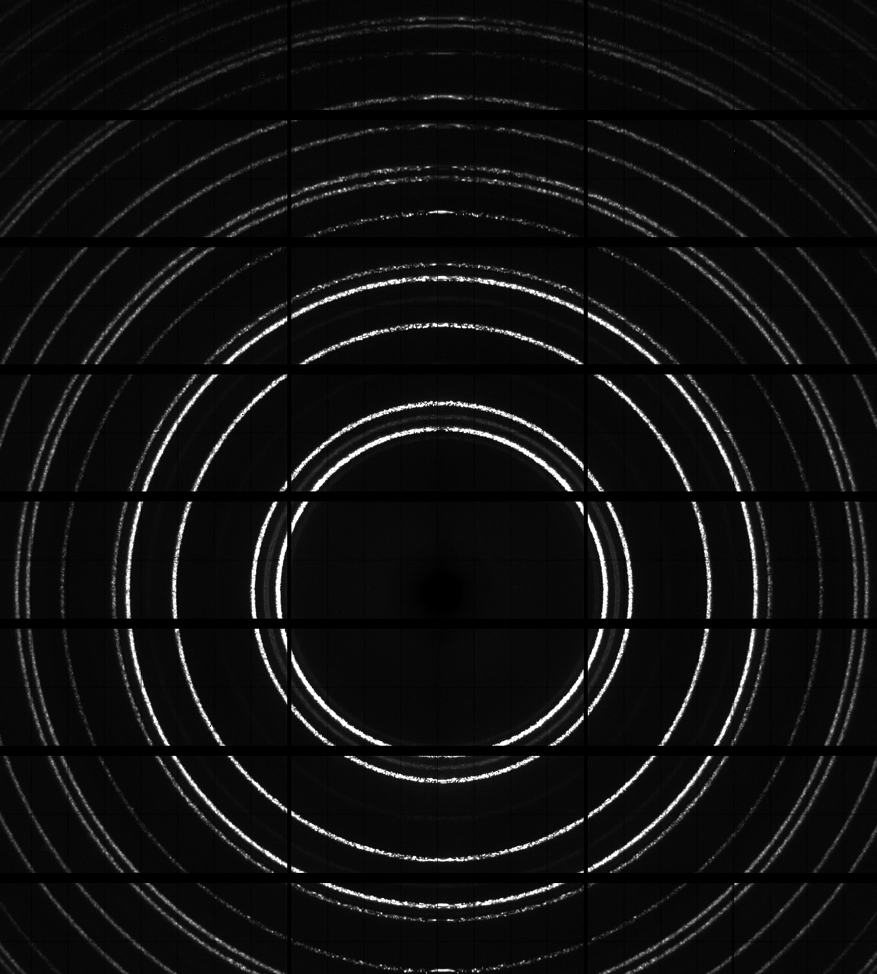I'm receiving an error message when I try to use the grid_index_parallel module inside a custom script I am writing.
Instead of specifying the input flt file, par file etc from the command line, I am setting them separately:
from ImageD11.grid_index_parallel import grid_index_parallel
clean_peaks = '/path/to/cleanpeaks.flt'
optimized_pars = '/path/to/optimized_pars.par'
gridpars = {
"DSTOL": 0.035,
"OMEGAFLOAT": 0.5,
"COSTOL": 0.002,
"NPKS": 40,
"TOLSEQ": [0.02, 0.015, 0.01],
"SYMMETRY": "cubic",
"RING1": [1, 0],
"RING2": [1, 0],
"NUL": True,
"FITPOS": True,
"tolangle": 0.5,
"toldist": 172 * 2,
}
translations = [
(t_x, t_y, t_z)
for t_x in range(-600, 601, 400)
for t_y in range(-600, 601, 400)
for t_z in range(-600, 601, 400)
]
<code snipped>
if indexed:
print("Already indexed!")
else:
random.seed(int(time.time()))
random.shuffle(translations)
grid_index_parallel(clean_peaks, optimized_pars, 'out', gridpars, translations)
My custom script has it's own input and output arguments which are formatted differently than usual.
The rest of my code runs fine, but when we drop into multithreading:
WARNING:root:titles are sc fc omega
WARNING:root:titles are sc fc omega
Done init
Using a pool of 15 processes
Hello from ForkPoolWorker-1 7277 5 to doout.flt 95664
Hello from ForkPoolWorker-2 7278 5 to doout.flt 95664
Hello from ForkPoolWorker-4 7280 5 to doout.flt 95664
Hello from ForkPoolWorker-3 7279 5 to doout.flt 95664
Hello from ForkPoolWorker-5 7281 4 to doout.flt 95664
Hello from ForkPoolWorker-6 7282 4 to doout.flt 95664
Hello from ForkPoolWorker-7 7283 4 to doout.flt 95664
Hello from ForkPoolWorker-9 7285 4 to doout.flt 95664
Hello from ForkPoolWorker-8 7284 4 to doout.flt 95664
Hello from ForkPoolWorker-10 7286 4 to doout.flt 95664
Hello from ForkPoolWorker-11 7287 4 to doout.flt 95664
Hello from ForkPoolWorker-12 7288 4 to doout.flt 95664
Hello from ForkPoolWorker-13 7289 4 to doout.flt 95664
Hello from ForkPoolWorker-14 7290 4 to doout.flt 95664
Hello from ForkPoolWorker-15 7291 4 to doout.flt 95664
WARNING:root:titles are sc fc omega
WARNING:root:titles are sc fc omega
Caught exception in worker thread
Traceback (most recent call last):
File "lib/python3.7/site-packages/ImageD11/grid_index_parallel.py", line 245, in wrap_test_many_points
test_many_points( x )
File "lib/python3.7/site-packages/ImageD11/grid_index_parallel.py", line 146, in test_many_points
mytransformer.loadfileparameters( parameters )
File "lib/python3.7/site-packages/ImageD11/transformer.py", line 242, in loadfileparameters
self.parameterobj.loadparameters(filename)
File "lib/python3.7/site-packages/xfab/parameters.py", line 183, in loadparameters
lines = open(filename,"r").readlines()
FileNotFoundError: [Errno 2] No such file or directory: '95664'
This number '95664' is actually sys.argv[2] in my script, so it feels like somehow that's getting passed to the grid_index_parallel module.
Thanks for your continued help.




